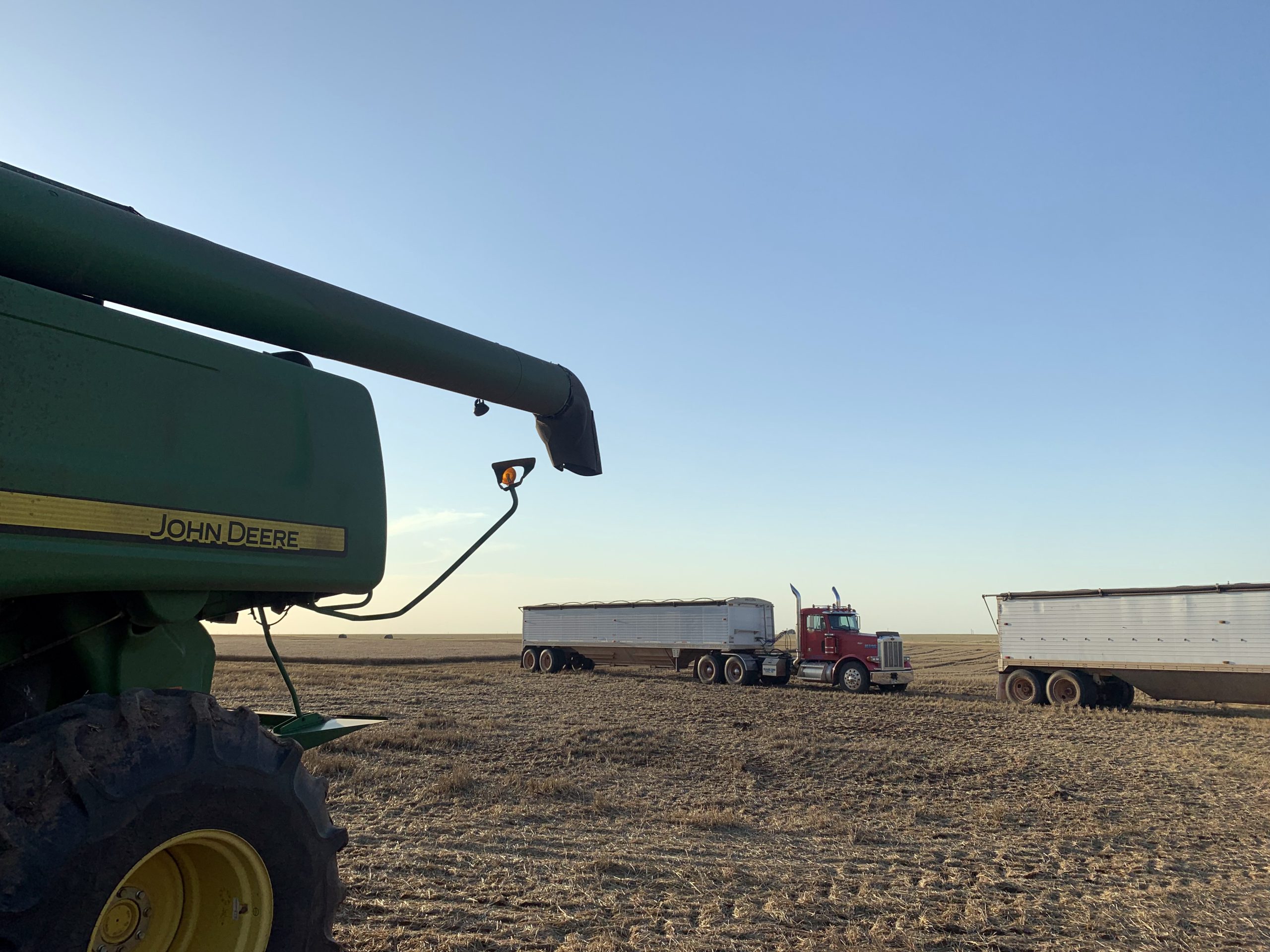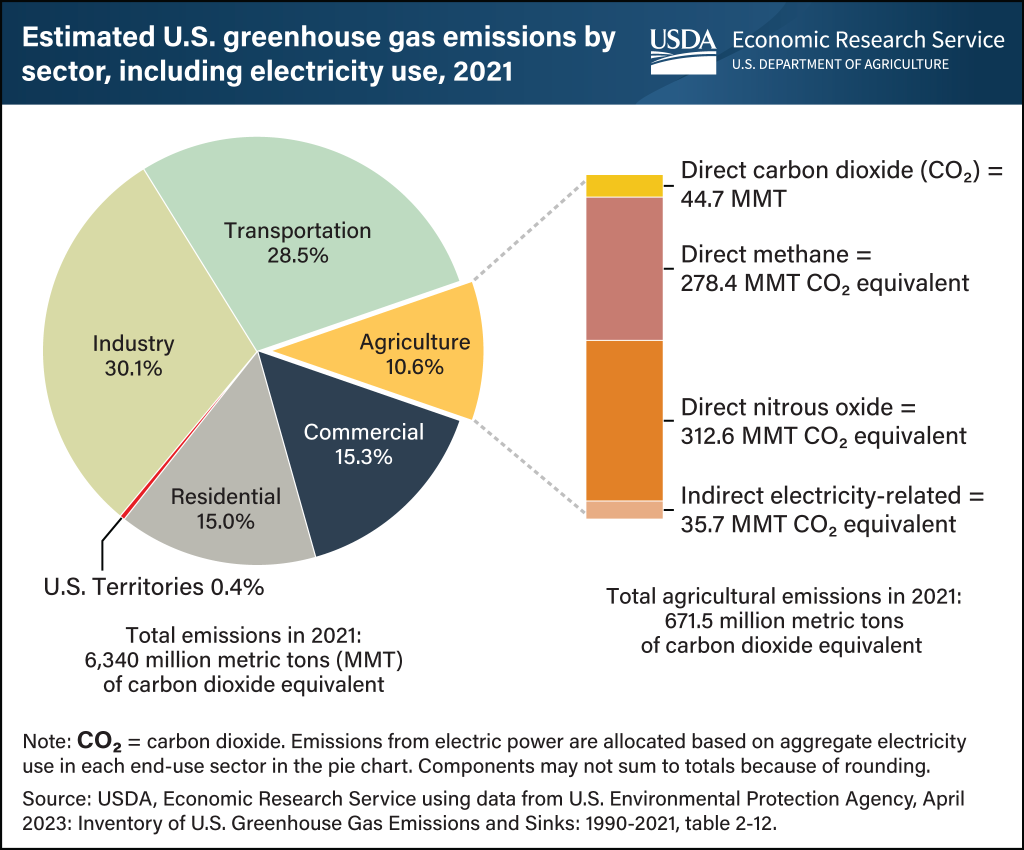Democrats propose net-zero agriculture emissions by 2050

Although this election year has been peppered with hot-button topics, such as immigration, gun control, abortion and economic progress, climate change is still a key talking point—and agriculture continues to be entwined with it.
Both the Republican and Democratic parties release platforms every four years to summarize the party’s updated priorities and goals for the next four years of legislation. These documents can help voters decide whom to vote for at the polls on election day.
The Democratic Party released its platform on Aug. 19, in conjunction with the Democratic National Convention, and announced the party’s plan for net-zero agricultural emissions by 2050. President Joe Biden previously called for net-zero energy emissions for the economy by 2050, when he took office in 2021. The 2024 Democratic platform narrowed that focus to agriculture’s production of greenhouse gasses.

According to the U.S. Department of Agriculture, agriculture accounted for 10.6% of U.S. GHG emissions in 2021. The total emissions from agriculture that year amounted to 671.5 million metric tons of carbon dioxide equivalent. Comparatively, the U.S. territories contributed 0.4% of emissions; the commercial sector made up 15.3%, the residential sector contributed 15%, transportation emitted 28.5%, and industry was responsible for the largest percentage of GHG emissions with 30.1%.
Other countries have had similar ambitions. In 2019, New Zealand set a goal of net-zero emissions for that country by 2050, but in July 2024 it was announced New Zealand would not meet its target. Scientists say new data shows New Zealand’s government’s approach to reducing emissions is high risk, and the technologies it relies on are underdeveloped. No data has been released to indicate if this objective would be possible for American agriculture by 2050.
Other agricultural impacts
The 92-page Democratic platform—in contrast to the 16-page Republican platform—has a subhead devoted to agriculture and highlights the party’s plan for the industry over the next four years. It describes the Biden administration’s efforts to invest in new sources of income for farmers to help them meet the net-zero emission objective.
“Under President Biden’s landmark climate law, the Agriculture Department is paying farmers to adopt climate-smart practices, which sequester carbon from the atmosphere, improve soil health and biodiversity and restore water cycles, all while opening new revenue streams from ecosystem services markets,” the platform stated. “Already, over 80,000 farms covering 75 million acres have adopted these practices.”
Democrats expect programs like the USDA’s $3.1 billion climate-smart agriculture initiatives to provide the extra boost farmers meet to meet the party’s goal. Agriculture Secretary Tom Vilsack said those programs will create markets for more sustainable commodities.
“Democrats will partner with farmers to make the American agriculture sector the first in the world to achieve net-zero emissions, opening up new sources of income for farmers in the process,” the platform continued. “We will substantially improve water security and ecological health through conservation, protection and maintenance of our water infrastructure, including water systems for home, commercial, industrial and agricultural use.”
Furthermore, agricultural land is expected to play a part in reducing the carbon footprint from power plants and instituting clean energy sources, long-term ambitions for the Democratic Party. The 2024 platform stated an additional 500 million solar panels and 60,000 wind turbines are planned to advance the progress toward clean energy—many of which will be installed on agricultural land. In the past, Democrats have announced goals of eliminating carbon pollution from power plants by 2035.
The Democratic platform also touched on the rising costs of farm inputs and the loss of family farms over the last 40 years. The document voiced support for independent meat processing plants and championed the right to repair for farmers. It used the Inflation Reduction Act as an example of how the administration has been helping farmers and ranchers adopt climate-smart practices and increase productivity.
“The administration recognizes the critical role that our land stewards play in our food systems, economy and environment and is working hard to drive both public and private funds to reward these champions for nature for their hard work,” the platform stated.
The 2024 presidential election results will play a pivotal role in the direction of the United States and the controversial issues at stake. Democratic and Republican Party platform documents can be viewed at www.presidency.ucsb.edu/documents/app-categories/elections-and-transitions/party-platforms.
Lacey Vilhauer can be reached at 620-227-1871 or [email protected].


